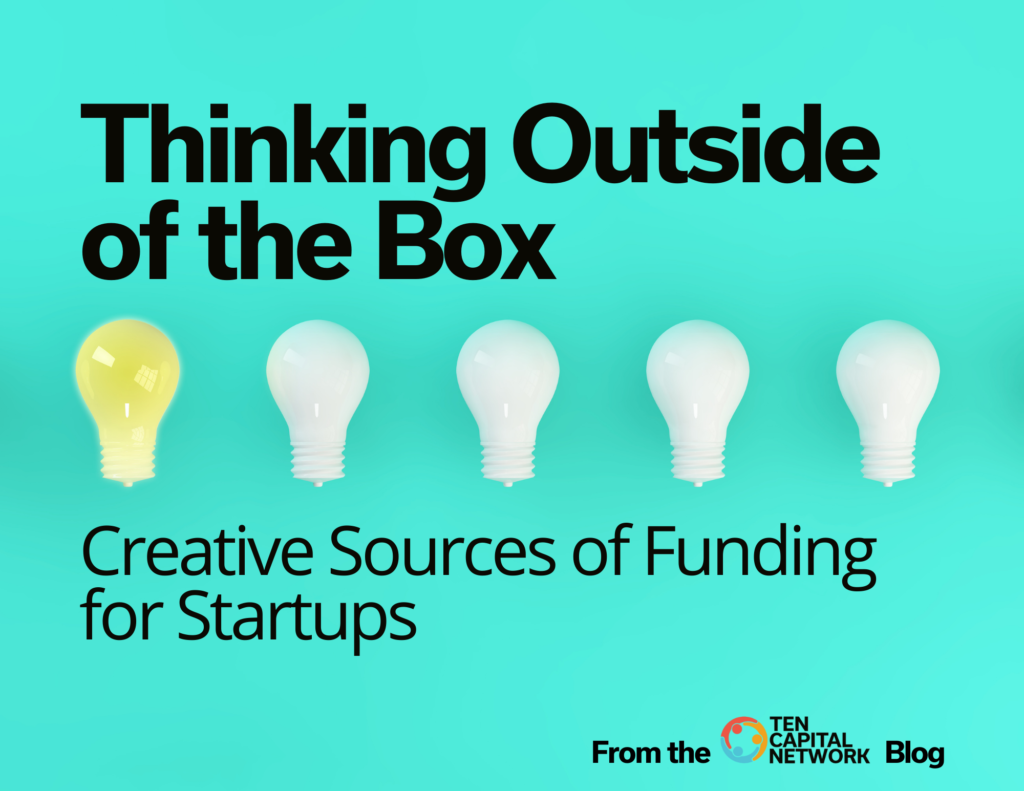2 min read Finding funding is an indefinite ongoing process for startup organizations. Equity funding is a typical go-to for many startups, however, it is not always the most ideal form of funding. Below are a few creative sources you can look to for your next raise.
Loans
Loans are debt instruments that must be repaid.
Startups can find it difficult to get a traditional loan from a bank. The Small Business Administration offers several loan types for early-stage companies. These loans come with personal guarantees and cannot be closed out with the dissolution of the business.
There’s also debt through the use of credit cards and microloans. It’s difficult to use debt to pay for your core product development. Debt makes sense when you have some revenue coming in to pay for the loan.
There are other types of debt including accounts receivable factoring in which you raise money on what customers owe you. There’s also equipment financing in which the equipment collateralizes the debt. Factoring works when you have to pay customers and want to shrink the cash float from the time you build the product until the time you receive payment. Equipment financing works well if you need machinery to build your product or run your business.
Credit Lines
A line of credit is a short-term loan from the bank to help smooth out cash-flow cycles. Unlike a bank loan in which you receive an injection of funds, a line of credit lets you draw upon it when you need and pay it back when you can. The interest rate on a line of credit is substantially lower than credit cards and offers a higher borrowing limit than most credit cards. However, the interest rates are often variable and not fixed.
A secured line of credit is backed by an asset, while an unsecured line of credit is not. An unsecured line of credit will come with a higher interest rate. There are both personal and business lines of credit. Personal lines of credit are often secured by personal property. For a business line of credit, the bank determines your credit limit based on the business assets and cash flow. The bank determines the interest rate by adding the interest to a margin that is affected by your credit history, profitability, and business risk. The line of credit is a useful tool for early-stage businesses to help with cash-flow issues.
Licensing
You may be able to reduce the amount of funding needed to grow your business by licensing your technology to others. Instead of building and selling a product, you can license to others who will build and sell the product. In licensing, you must have a patent to protect your technology and oftentimes a series of supporting tools to help those who license your technology for using it.
Licensing brings the following benefits:
- It reduces the amount of capital you need to raise.
- It can generate a substantial return given the costs are low.
- The risk of product failure is shifted to the licensee.
The disadvantages are:
- You don’t control how it is used.
- Your licensee may later compete with you.
- You don’t receive the full revenue as if you had built and sold the product yourself.
Licensees can also bring you new ideas for improvements on the technology. For applications requiring high-capital expenditures for building and selling the product, licensing is a good fit.
Grants
Grants are typically provided by government organizations to spur research and make a small contribution to the business. Commonly used grants include SBIR, Small Business Innovation Research, which provides phase 1, 2, and 3 grants that add up to $1M. You can search for grants at www.grants.gov.
Grant funding is mostly one-time offerings and need not be paid back. They are non-dilutive which means they don’t take any space on the cap table. Use grants to cover costs that customers will not. For example, customers will not pay for basic research but only for finished products.
Grants often come with rules on how they can be spent. Be careful in spending too much time with grants. I once worked with a company that had raised over $4M from grants over a five-year period. The team became experts at writing grant proposals but no one could sell, market, or do much of anything for a customer because for five years they focused on writing and winning government grants.
Read more TEN Capital eduction: https://www.startupfundingespresso.com/education/

Hall T. Martin is the founder and CEO of the TEN Capital Network. TEN Capital has been connecting startups with investors for over ten years. You can connect with Hall about fundraising, business growth, and emerging technologies via LinkedIn or email: hallmartin@tencapital.group





